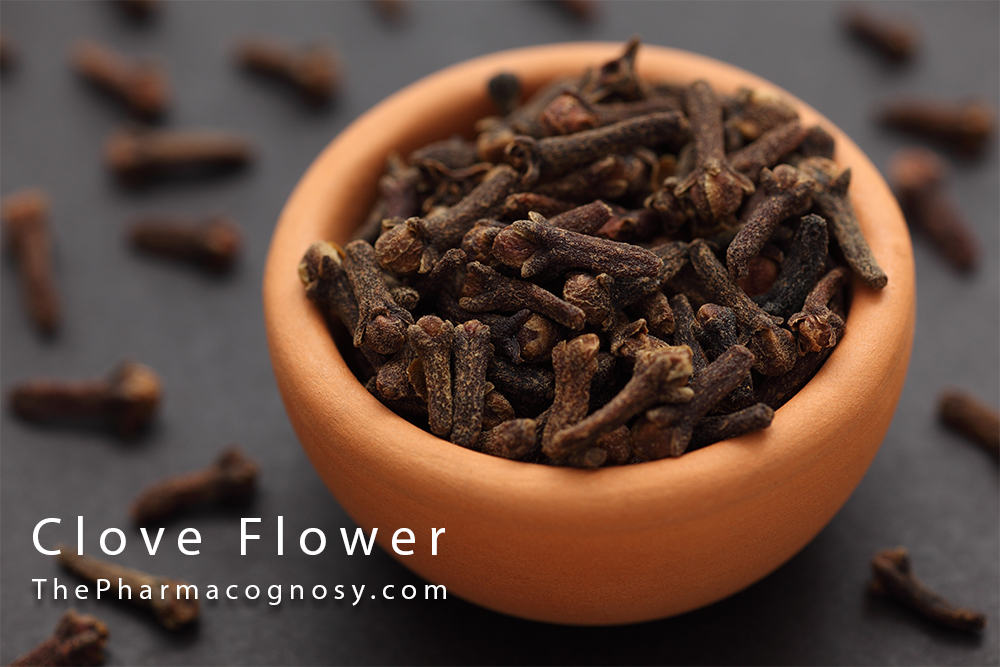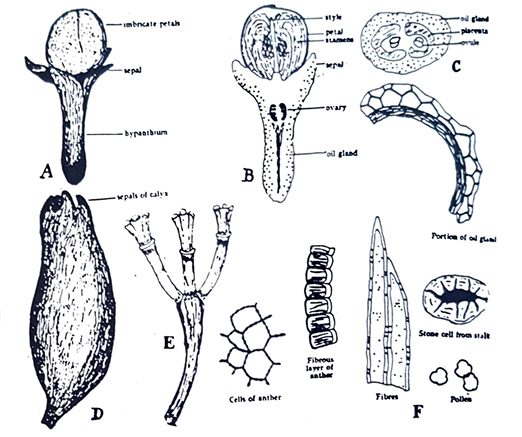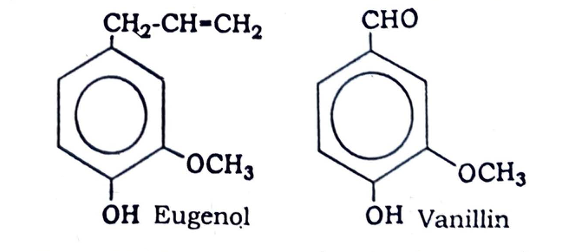Synonyms
Caryophyllum, Caryophyllus, Caryophylli
Botanical Source of Clove Flower
Clove is the dried flower buds of Eugenia caryophyllus (Spring.) Spraque, and evergreen tree of the family Myrtaceae.
Geographical source
Eugenia caryophyllus is indigenous to Molucca islands and is now commercially cultivated in Zanzibar and Pamba (Tanzania) Islands and also in many other Island countries of the world.

Macroscopical Characters of Clove
The flower bud consists of a subcylindrical hypanthium (swelling of the torus) forming the stalk’, which is tapering at the lower end and crowned by four thick spreading sepals and a spherical ‘head’ of tightly packed petals. It is bright reddish brown in colour. It is 15 to 20 mm long, and possesses a strong spicy odour and pungent aromatic taste. The hypanthium (the stalk) contains numerous oil glands near the surface. The projecting sepals are thick, dark brown in colour and contain numerous oil glands. The membranous petals. enclose in the head numerous free, in-curved stamens. Ovary bi-locular and contains numerous ovules. Style single, firm and erect.
Microscopical Characters of Clove Flower
Epidermis of hypanthium is composed of straight walled, polygonal cells with very thick cuticle and large stomata. Cortical region contains a high proportion of large, oval schizo-lysigenous oil glands. A large portion of the peripheral part of hypathium cylinder is composed of parenchyma cells containing clusters of calcium oxalate and a ring of fibrovascular bundles and stone cells.
The central portion of the hypanthium is formed of a ring of bicollateral vascular bundles. Epidermal cells of the sepals exhibit a large number of stomata, numerous oil glands and clusters of calcium oxalate. Mesophyll cells of the petals have straight walls and contain numerous clusters of calcium. oxalate and oil glands. The stamens exhibit a well-marked fibrous layer, numerous small clusters of calcium oxalate and oil glands. Pollen· grains are/ tetrahedral, 15 to 20 µmin diameter.

Fig. 33: Clove. A, f1ower bud; B, 1.s. of bud; C. t.s. of bud through the ovary: D, mother Clove, E, Clove stalk; F, elements of Clove powder. (Reconstructed from Herbert & Ellery).
Chemical Constituents of Clove Flower
Clove contains 15 to 20 percent of volatile oil, the chief constituent of which is eugenol. It also contains vanillin, 10 to 13 percent of tannin, terpenic acid, gum. resin and a crystalline substance called caryophyllin.

Uses of Clove Flower
Clove is used as an aromatic stimulant, antispasmodic and carminative and for the preparation of Clove oil.
Substitutes and Adulterants
Common substitutes and adulterants of Clove include
- ‘spent’ clove (partially or completely exhausted of its volatile oil content)
- ‘blown clove (full grown flowers)
- ‘mother’ clove (nearly ripe dried fruits), and
- clove stalks.

